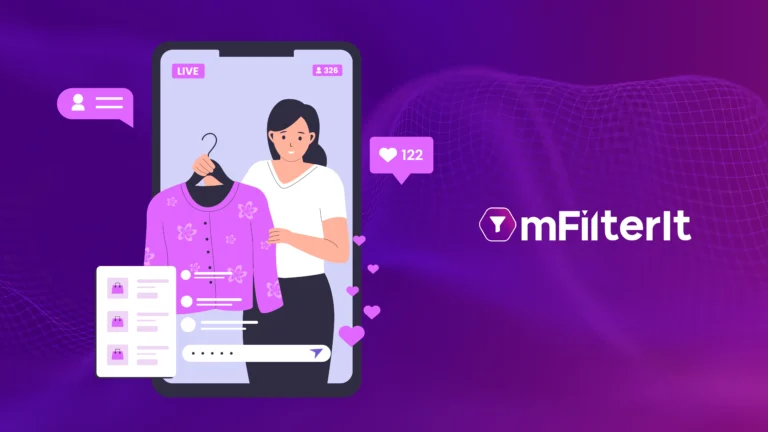Mobile app advertising is all about data coming from CPI campaigns – ROAS and LTV being the go-to metrics to measure campaign performance and success. But are you sure the metrics you are relying on are giving you the right results?
The numbers on your dashboard are not always true.
As advertisers pour more budget into mobile performance campaigns, many overlook critical vulnerabilities – mobile ad fraud. It’s not just a line-item loss, it’s a performance killer that inflates Return on Ad Spend (ROAS) and erodes Customer Lifetime Value (LTV).
Fraudsters exploit the systems marketers depend on – attribution models and campaign metrics – using sophisticated tactics like click fraud, fake installs, click injection, SDK spoofing, etc.
The result? Campaigns scale based on fake signals, and strategies built on manipulated data lead to long-term business erosion.
In this article, we’ll break down exactly how mobile ad fraud works, why it’s killing your ROAS and LTV, and the steps you can take right now to combat fraud and protect your mobile app marketing investment.
What is Mobile Ad Fraud?
Mobile ad fraud is the deliberate manipulation of ad ecosystems to produce fake user interactions – clicks, installs, or post-install events that appear legitimate but are entirely fabricated. These activities are done by sophisticated fraud networks using a range of tools, from bots and emulators to stolen device IDs and malicious SDKs.
The primary objective of fraudsters is to earn money by draining advertising budgets without delivering any real user engagement or business value. This type of fraud not only eats into your ad spending but also corrupts the data you rely on for campaign optimization and ROI measurement.
According to mFilterIt’s analysis, there has been a significant rise in ad fraud in apps at each level of the funnel, the highest being at the install stage:

Common Types of Mobile Ad Fraud Include:
- Click fraud: Use of bots or click farms to generate invalid clicks, depleting budgets without real engagement.
- Click injection: Malicious apps trigger fake clicks just before install happens, hijacking attribution for organic or paid traffic.
- Install farms: Real humans or emulators install apps repeatedly to simulate legitimate installs, often incentivized by rewards.
- SDK spoofing: Hackers simulate in-app events by manipulating SDK data, making it appear to be genuine user actions.
- Device farms: A collection of real or emulated devices are used to generate large volumes of fake installs and activity.
- Attribution fraud: Fraudsters use methods like click spamming or injection to steal credit for installs they didn’t drive.
Understanding the Mobile Attribution Flow
To understand how mobile ad fraud destroys ROAS and LTV in mobile advertising campaigns, it is also important to understand the mobile attribution flow. Here’s a step-by-step breakdown of how it works:
- A user taps on an ad shown on their device.
- That click is first logged by the media partner responsible for the ad placement, and the user is redirected to the relevant app store.
- Simultaneously, the click data is sent to a Mobile Measurement Partner (MMP) who stores this engagement.
- The user installs and launches the app.
- When the app is opened for the first time, it triggers an SDK that sends install data back to the MMP.
- The MMP matches this install event to previous ad clicks using algorithms and attribution windows.
- If a match is found, the install is labeled as ‘non-organic’ and credited to the corresponding media partner.
- This data is then reflected in the advertiser’s analytics dashboard, forming the basis of ROI measurement.
Fraudsters use techniques like click injection or spoofed signals to insert themselves into the attribution path at the last moment, stealing credit for real installs or faking installs altogether.
How Mobile Ad Fraud Impacts Your ROAS
Return on Ad Spend (ROAS) is one of the most critical metrics for marketers. It tells you whether your advertising investment is bringing returns or not.
1. Inflated ROAS from Fake Installs
Fraudulent installs, generated by bots or device farms, appear legitimate on the surface. Campaign dashboards show low Cost Per Installs (CPI), leading marketers to believe their campaigns are effective. But these “users” never convert or engage – they don’t exist.
This false sense of performance skews ROAS calculations, making underperforming channels look profitable. As a result, marketers double down on ineffective campaigns, throwing more money into a bottomless pit.
2. Simulated Post-Install Events
Fraudsters use advanced fraud techniques to spoof in-app events such as sign-ups, purchases, or logins to mimic user engagement. These simulated activities trick attribution platforms into registering conversions and inflate downstream metrics.
Campaigns are then optimized for behavior that never actually occurred, misguiding everything from creative strategy to channel selection.
3. Budget Drain Through Attribution Hijacking
Fraudsters don’t need to fake the whole user’s journey. Sometimes, they hijack attribution through click fraud, click injection, or click spamming. They steal credit for installs that were actually organic or driven by legitimate partners.
This leads to misallocation of ad spend, with high-performing partners being undervalued while fraudsters receive undue payouts, degrading overall ROI.
How Mobile Ad Fraud Impacts LTV
Customer Lifetime Value (LTV) is a long-term metric that reflects the revenue generated by a user over time. LTV is foundational for forecasting, retention strategy, and sustainable growth. But fraud undercuts this in serious ways.
1. Zero-Value Users Coming via Incent Fraud
Fake installs and incentivized users attained through malicious techniques like install farms or incent fraud typically show no engagement beyond the install. These users don’t make purchases, complete onboarding, or return to the app, meaning zero contribution to lifetime value.
2. Skewed Retention Metrics
When non-human or low-intent users are included in your data, LTV projections are overestimated. You might assume a healthy user base when in reality, it’s full of churned or non-existent users.
3. Deceptive CAC-to-LTV Ratios
A campaign might look profitable based on CPA and early event metrics, but if LTV is inflated due to fake users or spoofed events, the actual value delivered will never justify the acquisition cost.
What Marketers Can Do to Safeguard ROAS and LTV
Mobile advertising or pay-per-click advertising is only as strong as the data it relies on. And when fraud skews that data, it doesn’t just sabotage campaign results – it impacts strategic decisions, budget allocations, and long-term growth altogether.
So, how can marketers proactively protect their ROAS and LTV from the invisible drain of mobile ad fraud?
1. Implement Multi-Layered Fraud Detection
Rely on solutions that detect fraud across the full funnel – clicks, installs, post-install events, and attribution. Real-time, multi-layered fraud detection is essential to filter out fake users.
2. Shift Focus from Volume to Quality
High install numbers don’t mean high value. Optimize for users who engage meaningfully post-install to drive authentic LTV.
3. Regularly Audit Attribution Data
Review your attribution reports frequently to identify discrepancies such as sudden spikes from unknown sources, abnormal click-to-install times, or low engagement from certain partners. These could be signs that fraudsters are manipulating attribution paths.
4. Use First-Party Data and Behavioral Signals
Rely on first-party behavioral data to cross-verify user authenticity. Real users tend to follow logical engagement patterns, completing onboarding steps, triggering key events, or returning to the app.
5. Make Fraud Prevention a Strategic Investment
Fraud detection shouldn’t be a reactive cost center. Investing in the right tools protects your marketing efficiency, improves your ROAS and LTV, and brings clean, trustworthy data for long-term decision-making.
How mFilterIt’s Ad Fraud Solution Helps Safeguard ROAS and LTV
Our robust ad fraud detection solution, Valid8, empowers marketers to cut through the noise and eliminate fraud at every stage of the user journey. Here’s how:
- It identifies unusual click patterns, suspicious user agents, and abnormal click-to-install times to block fraud before it costs you.
- Our system detects fake in-app actions triggered by SDK spoofing or automation, ensuring that only genuine events influence optimization decisions.
- It prevents attribution hijacking with advanced detection of click injection, click spamming, and spoofing attacks, restoring trust in your source reporting.
- Valid8 evaluates installs not just by volume, but by quality, using engagement and retention data to score traffic sources based on true value.
- You get full visibility into fraud types, sources, and impacted metrics, making it easier to detect anomalies at each level and drive informed decisions.
- It uses a dual-layer protection model – Pre-MMP and Post-MMP checks to detect fraud at every stage to ensure end-to-end traffic integrity without compromising user experience.
With Valid8 – as a part of your marketing tech stack, you will not just be defending your budget – you will be maximizing the lifetime value of every user acquired.
Final Thoughts: Don’t Let Your Growth Be Built on Fake Metrics
Mobile ad fraud silently eats into your ROAS and LTV, distorting data and draining budgets. However, with the right ad fraud detection solution, you can get full-funnel fraud protection, real-time insights, and trustworthy attribution that powers real growth.
Ready to stop fraud before it impacts your bottom line? Contact Us. Take the first step toward smarter digital advertising now.



